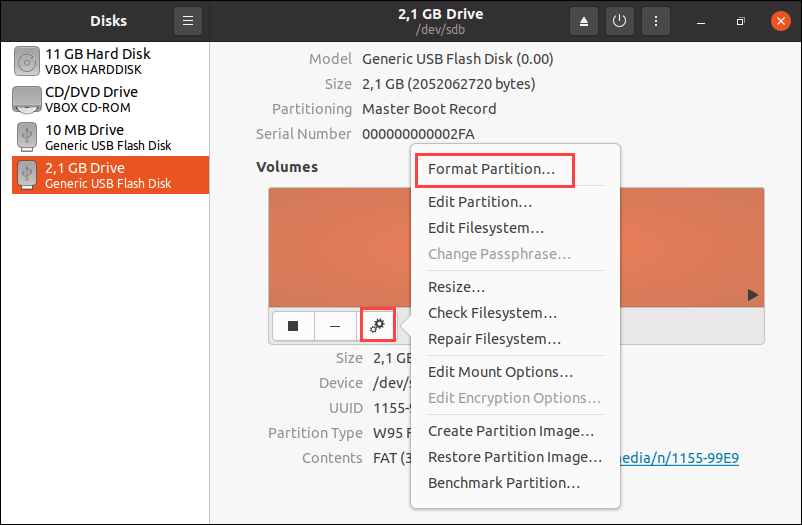

- #HOW TO REFORMAT A USB DRIVE AFTER USING IT TO BOOT LINUX HOW TO#
- #HOW TO REFORMAT A USB DRIVE AFTER USING IT TO BOOT LINUX FULL#
- #HOW TO REFORMAT A USB DRIVE AFTER USING IT TO BOOT LINUX ISO#
In this guide, we provide 3 methods to reformat a non-system hard drive: Disk Management, DiskGenius and DiskPart commands.
#HOW TO REFORMAT A USB DRIVE AFTER USING IT TO BOOT LINUX HOW TO#
Now you know how to format a bootable USB to normal but you can use this method to recover any other USB flash drive which stopped working or does not work correctly most likely you will be able to restore this flash drive to its normal state and it will start working as a new. Thus, a secondary disk can also be an external hard drive, USB flash drive or memory card. Hopefully, after that, your first drive will be working like a new one. Click on the topmost result to go to the 'Disk Management' window.

Go to the search panel on the Task Bar of your home screen on Windows, and search for 'Disk Management' or 'diskmgmt.msc'.
#HOW TO REFORMAT A USB DRIVE AFTER USING IT TO BOOT LINUX FULL#
As you can see, the lsblk command is showing me my SSD ‘sda’ where Linux Mint 18.1 is installed, ‘sdb’ is a USB Flash Drive, and ‘sdc’ is 1TB internal hard drive. Restoring your USB Drive to its original state will also restore it to its full capacity. So, when everything is finished successfully and there were no errors, you can create a new partition table on your flash drive and format it with the FAT filesystem as I showed above. Using ‘lsblk’ is the simplest and easiest way to find all block devices connected to your system.

And if your flash drive is big it takes a really long time. Also, writing zeros to a flash drive takes quite a lot of time. Note: Again, make sure that this is the name of your flash drive. But in this command, you do not need to specify any number, you need to provide the name of a drive, which is sdb. In the unmount command, I used sdb1 because it was a partition. Other option to format a bootable USB to normal This is due to incorrect partitioning when a bootable flag is added to a USB flash drive. For example, you copied some files there and they disappear or you can connect your flash drive to Linux but it does not work on Windows.
#HOW TO REFORMAT A USB DRIVE AFTER USING IT TO BOOT LINUX ISO#


 0 kommentar(er)
0 kommentar(er)
